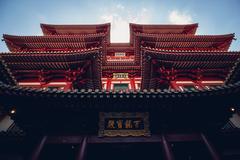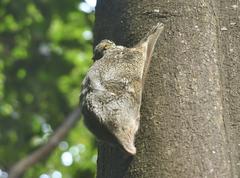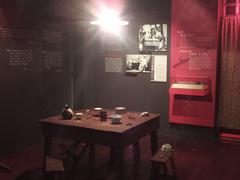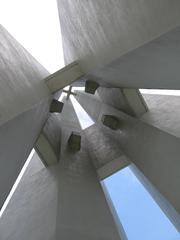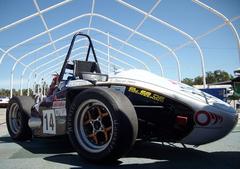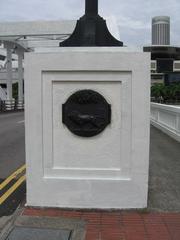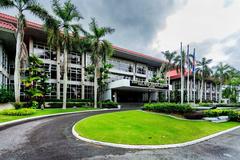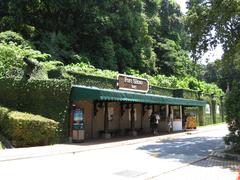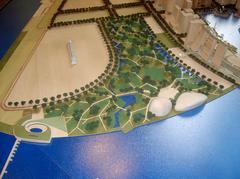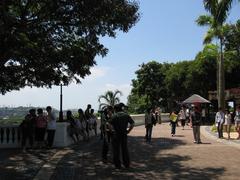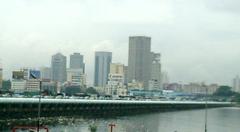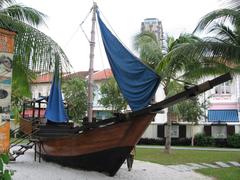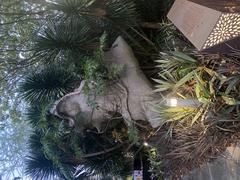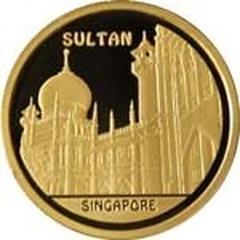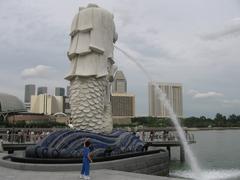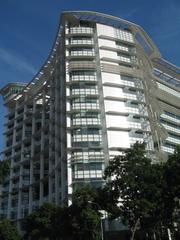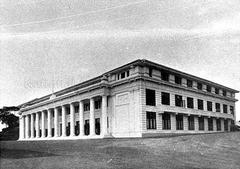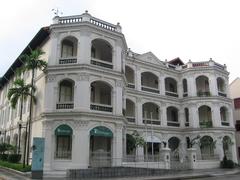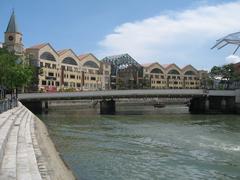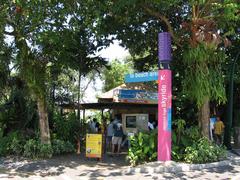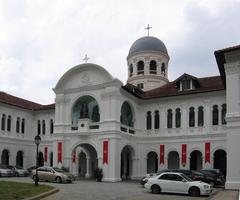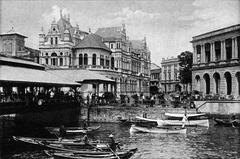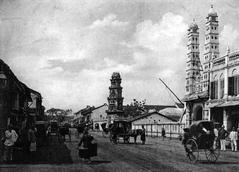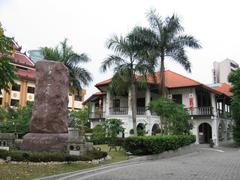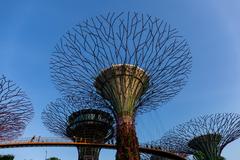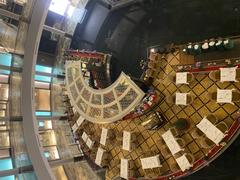Singapore Institute of Technology (SIT) Visiting Hours, Tickets, and Campus Guide
Date: 14/06/2025
Introduction
The Singapore Institute of Technology (SIT) has established itself as a key pillar in Singapore’s higher education since its inception in 2009. As the nation’s fifth autonomous university, SIT is renowned for its applied learning philosophy, robust industry partnerships, and commitment to sustainability. Its distributed campus model—anchored by the innovative Punggol campus—underscores SIT’s integration of technology, community, and eco-friendly design.
This comprehensive guide delves into SIT’s history, academic evolution, campus infrastructure, and sustainability initiatives. It also provides practical visitor information, including visiting hours, tours, and tips to make the most of your campus experience. Whether you are a prospective student, academic, or curious traveler, this resource will help you discover why SIT is at the forefront of education and innovation in Singapore.
For more on SIT’s background and mission, see University Guru. To explore the design and sustainability of the Punggol campus, refer to Forbes and Singapore Business Review. For visitor information, see Campus.sg.
Table of Contents
- Historical Evolution and Significance
- Campus Infrastructure and Sustainability
- Academic Innovations and Industry Partnerships
- Visitor Guide: Hours, Tours, and Facilities
- Travel Tips and Nearby Attractions
- Frequently Asked Questions (FAQ)
- Summary and Key Takeaways
- References
Historical Evolution and Significance
Founding and Growth
SIT was established in 2009 to bridge the gap between academic theory and industry practice, focusing on students seeking a hands-on, career-driven education (University Guru). Initially, SIT partnered with overseas universities, offering programs in engineering, health sciences, design, and IT. The strong demand for applied learning quickly led to an enrollment of over 500 in its inaugural year (reddit.com).
Becoming an Autonomous University
In 2014, SIT gained autonomous university status, allowing it to develop independent degree programs tailored to Singapore’s workforce needs. The university introduced the Integrated Work Study Programme (IWSP)—a compulsory, long-term internship—and fostered employer-consulted curricula (Top Universities).
Campus Model and Expansion
SIT operates a distributed campus model, building clusters near industry hubs to maximize collaboration and accessibility:
- SIT@Dover: Main administrative and academic center.
- Satellite Campuses: Co-located with polytechnics (Nanyang, Singapore, Temasek, Republic), supporting seamless student progression.
- Punggol Campus: The upcoming flagship campus, designed as an eco-friendly university town, will eventually serve over 12,000 students (University Guru).
Academic Innovations and Industry Partnerships
SIT’s hallmark is the IWSP, integrating up to 12 months of real-world industry experience into every degree (reddit.com). Industry advisory boards shape curricula, ensuring relevance to employers’ needs. Continuing Education and Training (CET) programs support lifelong learning, while partnerships with 100+ companies facilitate research, curriculum co-development, and student projects.
Academic Offerings and Student Body
SIT’s enrollment has grown from 500+ in 2010 to over 10,000 by 2025, with 40+ degree programs across:
- Engineering
- Chemical Engineering & Food Technology
- Infocomm Technology
- Health & Social Sciences
- Design & Specialized Businesses
Programs like Aircraft Systems Engineering and Sustainable Infrastructure Engineering reflect SIT’s applied, future-oriented focus (University Guru).
Role in Singapore’s Education Landscape
SIT plays a critical role in Singapore’s economic transformation, producing industry-ready graduates and facilitating mid-career upskilling (Top Universities). Its unique model attracts polytechnic graduates and international students, with high employment rates and competitive starting salaries.
Community and Campus Culture
SIT’s diverse “SITizen” community includes many from polytechnic backgrounds and abroad. The university emphasizes inclusivity, leadership, and social responsibility, with vibrant co-curricular and community engagement programs (reddit.com).
Recent and Future Developments
The Punggol campus will serve as a “living lab” for smart city and sustainability solutions. SIT is deepening its research in urban solutions, healthcare, and digital transformation, reflecting Singapore’s innovation and lifelong learning priorities (University Guru).
Key Milestones
- 2009: SIT established
- 2010: First student intake
- 2014: Autonomous university status granted
- 2015–2025: Multi-campus expansion, Punggol campus initiated
- 2025: 10,000+ enrollment; 40+ degree programs
Campus Infrastructure and Sustainability
Punggol Campus: “Campus-in-a-Park”
The SIT Punggol campus exemplifies green, biophilic design, centered on a 1.7-hectare forest courtyard that doubles as a community park (Forbes). Academic buildings encircle this green heart, blending seamlessly with tropical rainforest elements.
Open, Borderless Community Design
With no gates or fences, the campus fosters open access for both SITizens and Punggol residents. Pedestrianized walkways and public green spaces encourage interaction and community use (Singapore Business Review).
Architectural Highlights
- Uniform Roofline: Enables optimal solar panel placement and a cohesive skyline
- Sky Gardens: Communal rooftop spaces for relaxation and gatherings
- Collaboration Loop: A 2-kilometre network connecting academic zones, research spaces, and the JTC Business Park, facilitating industry collaboration (Singapore Business Review)
Sustainability Initiatives
- Solar Power: 10,000 sqm of solar panels supply ~4% of campus electricity, reducing emissions (Straits Times)
- Smart Building Management: 20,000+ IoT sensors optimize energy use, lighting, and air conditioning for super low-energy performance (Singapore Business Review)
- Rainwater Harvesting: Supports landscape irrigation and reduces reliance on municipal water (Forbes)
- Biodiversity Conservation: Central forest courtyard and a mangrove conservatory (opening by Dec 2025) preserve local flora and promote research (Singapore Business Review)
Visitor Guide: Hours, Tours, and Facilities
Visiting Hours and Admission
- Public Spaces: Open daily, 7:00 AM – 10:00 PM. No entrance fee for park areas and walking trails.
- Academic Buildings: Access may be restricted outside of official events or guided tours.
Guided Campus Tours
SIT offers guided tours—especially during open houses and by appointment—led by student ambassadors. Tours highlight sustainability features, research facilities, and student life (Campus.sg).
Facilities and Amenities
- Academic & Research Spaces: Modern classrooms, labs, and Living Labs for applied learning (Forbes)
- Library & Learning Commons: Flexible study and collaboration areas
- Food & Beverage: Cafés and stalls near Blocks E5/E6; more options during events (Campus.sg)
- Accessibility: Adjacent to Punggol Coast MRT; shuttle service for events; barrier-free access throughout campus
- Recreation: Open lawns, walking trails, and sky gardens for wellness and social activity
Special Events
Open houses and public events feature interactive demonstrations, workshops, and sustainability showcases. Check SIT’s official events calendar for schedules.
Travel Tips and Nearby Attractions
- Footwear: Wear comfortable shoes for extensive walking.
- Weather: Bring water and sun protection, especially in Singapore’s humid climate.
- Transport: Use public transport (MRT, LRT, buses) to avoid limited parking.
- Nearby: Visit Punggol Waterway Park, Punggol Settlement for dining, or the Town Centre for shopping and leisure.
Frequently Asked Questions (FAQ)
Q: Is campus entry free?
A: Yes, public areas are accessible free of charge.
Q: How do I book a guided tour?
A: Tours are available during open houses and by appointment via the SIT website.
Q: Is the campus accessible for those with disabilities?
A: Yes, barrier-free pathways and lifts are provided.
Q: Can I visit the mangrove conservatory?
A: Yes, it is part of the public green spaces and will be open during visiting hours when completed.
Q: Are food options available on campus?
A: Cafés and stalls serve visitors and students, with expanded offerings during events.
Summary and Key Takeaways
The Singapore Institute of Technology is a leader in applied higher education, innovation, and sustainability. Its growth from a niche institute to a dynamic university is matched by its commitment to industry relevance and community engagement. The Punggol campus, in particular, stands out as a model of eco-friendly, inclusive university design.
Prospective students, visitors, and the public can enjoy guided tours, interactive events, and open green spaces, making SIT both an academic destination and a vibrant urban landmark. For the latest information on visiting hours, events, and campus developments, refer to the SIT official website and consider using the Audiala app for enhanced visitor experiences.
References
- SIT History and Background (University Guru)
- Punggol Campus Sustainability and Design (Forbes)
- Punggol Campus Features (Singapore Business Review)
- Visitor Guide and Campus Tours (Campus.sg)
- Official SIT Website (SIT)
- Community Engagement (Top Universities)



